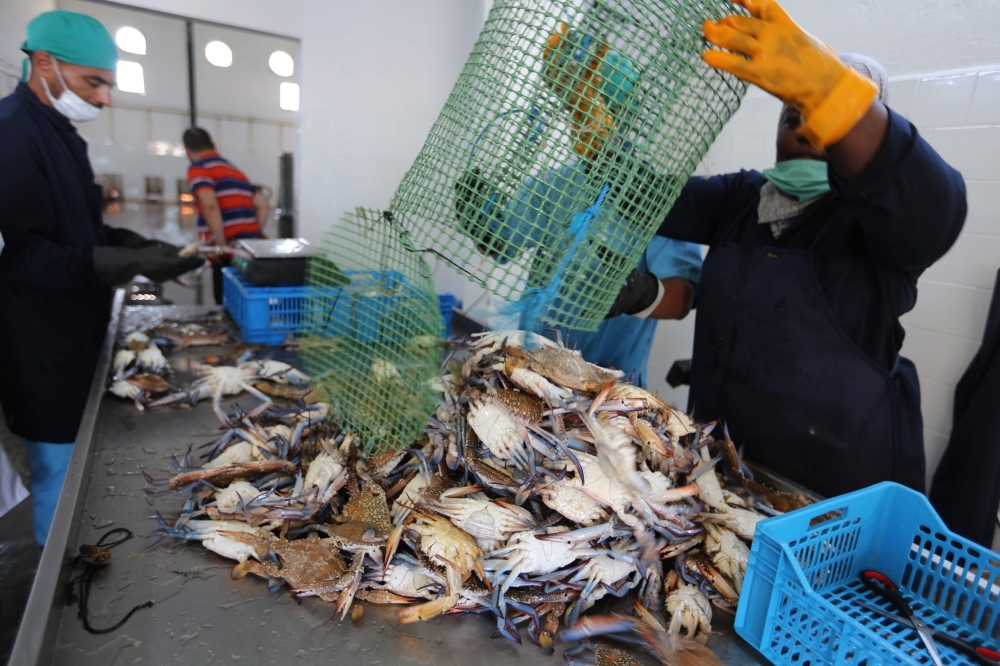
By Aymen Jamli
DJERBA, Tunisia — Tunisian fishermen saw the blue crab wreak such havoc on their catches when it first appeared that they nicknamed it after the terrifying militants of Daesh (the so-called IS) group.
But now — four years after these scourges of the sea invaded their waters — the predators have turned into prey as fishermen in the North African country cash in on the crustaceans.
Jamel Ben Joma Zayoud pulls his nets out of the water off the Mediterranean island of Djerba to find them full of blue crabs with their fearsome-looking spikes.
“Look, there are only Daesh, they’ve destroyed everything,” he says.
The blue crab, once a native of the Red Sea, first showed up in the Gulf of Gabes off Tunisia’s coast in 2014 and immediately set about snapping up the rich pickings it found.
“It quickly became a curse,” Zayoud, 47, tells AFP. “It eats all the best fish.”
Feeling the pinch
There are two explanations for how the blue crab, or Portunus Pelagicus, made it all the way to the shores of Tunisia, says researcher Marouene Bedioui, at the National Institute for Marine Sciences and Technologies.
Either their eggs were transported on boats to the region or they arrived as part of a lengthy migration that started when the Suez Canal opened in 1869.
However the crabs turned up, their impact has been damaging.
The hard-up fishermen along the coast, already struggling to make ends meet, felt the pinch as the crabs attacked their nets and the local fish.
“One thousand, one hundred fishermen have been hit by this plague in Gabes,” said Sassi Alaya, a member of the local labor union.
“Nowadays we change our nets three times a year, while before it was once every two years.”
In 2015 and 2016, fishermen demonstrated over the issue — and eventually the government took notice.
The authorities last year launched a plan aimed at helping fishermen to turn the pest into profit. They were taught how to trap the crabs and the government began subsidizing the cost of purchasing what was caught.
Plants popped up to freeze the crabs and ship them to markets in the Gulf and Asia where customers are willing to shell out for their meat.
One of them is managed by a Turkish company — putting to use the experience it gained dealing with an influx of the crabs back home.
Each afternoon a line of refrigerated vans forms outside the facility delivering the crabs caught that morning from nearby harbors.
“When the crab appeared we didn’t know how to make money from it,” said Karim Hammami, co-director of the firm Tucrab. “Tunisians didn’t consume it so the fishermen avoided catching it — but when investors came in and the authorities began moving we started targeting foreign markets.” — AFP